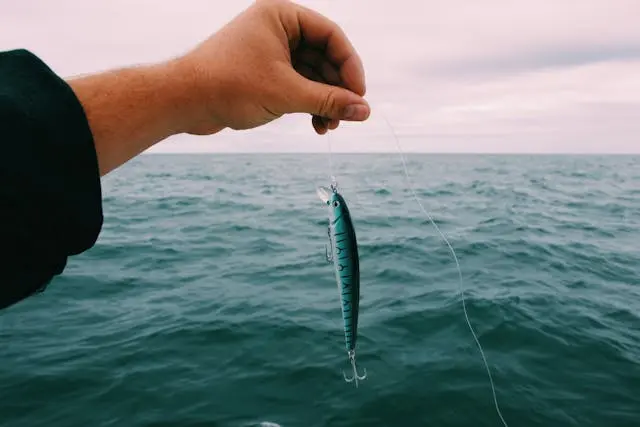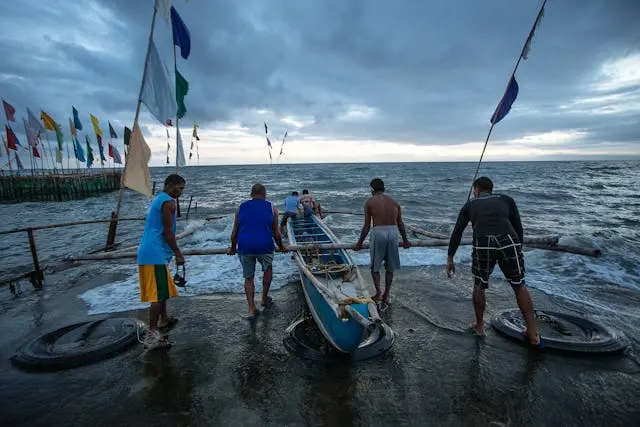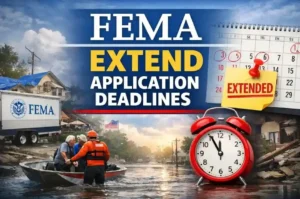Getting your hands on an Alaska Commercial Fishing License is your ticket to the thriving fishing industry of the Last Frontier. But where do you start? Understanding the ins and outs of the licensing process is key. In this guide, we’ll walk you through it step by step, no jargon, just plain talk. From picking the right license type to reaching out to the right folks, we’ll make sure you’re well-equipped for the journey ahead.
Process for Getting Alaska Commercial Fishing Licenses
Alaska’s commercial fishing industry is super important for the state’s economy and providing seafood worldwide. If you want to join in, you must get an Alaska Commercial Fishing License. Here’s what you need to do:

The key steps are:
- Get a Commercial Crewmember License.
- Determine the right commercial fishing permit.
- Apply for the permit.
- Obtain any other required licenses and permits.
1. Obtain a Commercial Crewmember License
- Anyone working aboard a commercial fishing vessel in Alaska must have a Commercial Crewmember License, which costs $60 for Alaska residents and $200 for non-residents.
- These licenses are valid for one year, and you can purchase them online through the Alaska Department of Fish and Game (ADF&G) website.
2. Determine the Appropriate Commercial Fishing Permit
- Alaska has two main types of commercial fishing permits: open access and selective gear.
- The specific permit required depends on factors such as the fishing location, target species, and license availability in the region.
- Contact one of Alaska’s Regional Fish Program Managers to determine the right permit. They can guide you to the appropriate license for your commercial fishing plans.
3. Apply for the Commercial Fishing Permit
- Many Alaska commercial fishing permits are distributed annually through a lottery system, with applications due in September.
- The application process involves providing information such as your legal name, social security number, and financial details to demonstrate that you can afford the commercial fishing operation.
- It’s important to apply early, as commercial fishing permits can be difficult to obtain.
4. Obtain Other Required Licenses and Permits
- In addition to the commercial fishing permit, you may need other licenses and permits, such as a Fisheries Business License from the Department of Revenue for processing or exporting activities.
By taking these steps and staying organized, you’ll be well-prepared to apply for and obtain your Alaska Commercial Fishing License.
Why is a Commercial Fishing License Necessary?
A Commercial Fishing License is crucial for anyone looking to participate in Alaska’s commercial fishing industry. This license grants legal permission to catch and sell certain fish species for profit, ensuring that fishermen operate within regulatory guidelines set by state authorities.
It’s not just about legality; a license demonstrates a commitment to sustainable fishing practices, helping preserve Alaska’s rich marine resources for future generations. Moreover, having a Commercial Fishing License opens doors to economic opportunities, allowing individuals to contribute to the state’s thriving fishing economy while supporting their livelihoods.
Economic Impact of Commercial Fishing Licenses
- Commercial fishing licenses play a crucial role in Alaska’s economy.
- They support numerous jobs and businesses across the state.
- License holders contribute to economic activity by harvesting, processing, and distributing seafood products.
- Revenue from commercial fishing activities adds to government budgets through taxes and licensing fees.
- The industry also supports ancillary sectors like transportation, hospitality, and retail.
- Sustainable fishing practices and responsible licensing are essential for maintaining this economic ecosystem.
Final Words
Obtaining an Alaska Commercial Fishing License is your gateway to the bustling fishing industry of the Last Frontier. Understanding the process is vital; this guide has broken it down into easy-to-follow steps. We’ve covered everything from getting your Commercial Crewmember License to applying for the right commercial fishing permit and obtaining other required licenses.
By taking these steps and staying organized, you’ll be well-prepared to join Alaska’s commercial fishing industry. Remember, holding a Commercial Fishing License ensures legality and reflects a commitment to sustainable practices, supporting the state’s economy and preserving its marine resources for future generations.
FAQs
How to get an Alaska commercial fishing license?
You must apply through the Alaska Department of Fish and Game to obtain an Alaska commercial fishing license. The process involves selecting an appropriate license type, meeting eligibility requirements, submitting necessary documentation, and paying the required fees. Specific steps may vary depending on the commercial fishing activity you plan to engage in.
What is the cost of an Alaska fishing license?
The cost of an Alaska fishing license depends on several factors, including residency status, age, and license type. Annual fishing licenses typically range from $20 to $145 for residents, while non-residents may pay between $25 and $250. Additional permits may be required for specific types of fishing, such as salmon or shellfish harvesting.
Can I fish in Alaska as a non-resident?
Yes, non-residents can fish in Alaska. However, they must obtain a non-resident fishing license, which is typically more expensive than resident licenses. Non-residents may also need to purchase additional permits for certain species or fishing locations.
How much do commercial fishermen make in Alaska?
The income of commercial fishermen in Alaska depends on factors such as the type of fishing operation, location, and market conditions. According to the Alaska Department of Labor and Workforce Development, the median wage for commercial fishermen in Alaska was around $49,000 in recent years. Still, earnings can range from below $20,000 to over $100,000.
How profitable is commercial fishing?
The commercial fishing and seafood industry, encompassing harvesters, processors, dealers, wholesalers, and retailers, had a substantial economic impact in 2016. This industry supported approximately 1.2 million jobs, contributing significantly to employment across various sectors.
Moreover, it generated an impressive $144 billion in sales impacts and added $61 billion to the Gross Domestic Product (GDP). These figures underscore the importance of the commercial fishing industry to the overall economy, highlighting its role as a significant driver of economic growth and prosperity.












